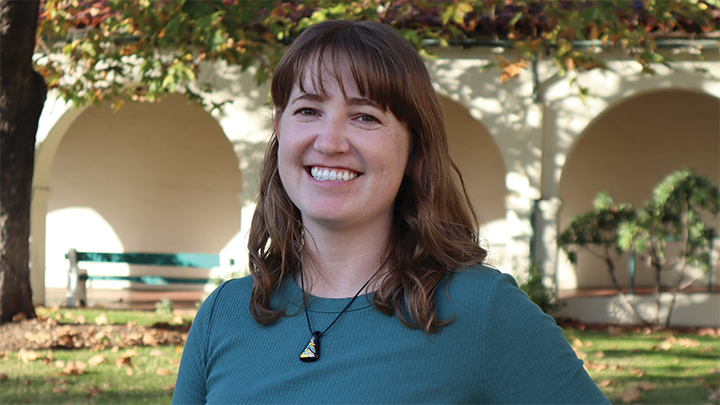San Diego State University: Doctoral Graduate Aims to Enhance Treatment for Microbial-Linked Diseases
“The vast majority of bacteria are in the lower intestine, where they process food, make vitamins and metabolize hormones,” said Scott Kelley, San Diego State University biology professor and program director for Bioinformatics and Medical Informatics. “It is like a rainforest in there with thousands of microbial species that we do not know much about.”
Studies have revealed differences in the types of bacteria between males and females, and that this differentiation occurs during puberty when sex hormones are produced. The reason for these changes is not well understood but Laura Sisk-Hackworth, a fifth year cell and molecular biology doctoral student, argues this is a critical area to explore, especially for the development of therapeutics for diseases that concern the microbiome.
For her work, Sisk-Hackworth is an Achievement Rewards for College Scientists (ARCS) Scholar who will be honored at the ARCS San Diego Chapter 2024 Scientist of the Year Celebration on April 27.
“Our research shows that there are sex differences in the gut microbiome and that these environments are affected by hormones,” said Sisk-Hackworth. “So, researchers probably need to take into account sex, pubertal status and hormonal status for certain therapeutics to be most effective.”
Conditions like ulcerative colitis and Crohn’s disease attack the gastrointestinal tract, and while it is unclear how exactly they are caused, scientists have found they differ in their prevalence among males and females and impact various parts of the gut differently. The microbiome also appears to be involved in diseases linked to changes in sex hormones, such as polycystic ovary syndrome (PCOS), a common hormonal disorder afflicting women worldwide whose cause is also not well understood.
To shed some light on how these variations develop, Sisk-Hackworth’s team used DNA-based methods to compare the gut microbiome of normal mice that undergo puberty to mutated mice that do not. In addition, they examined three sections of the intestine — the duodenum, the ileum, and the cecum — each of which holds a unique host of bacteria.
“We found that in the normal mice, there were sex differences in each intestinal section, but in the mutated mice, there were virtually no sex differences in any section except in the mucosa of the ileum,” she said. “This indicates that, while the hypothalamic pituitary gonadal axis (HPG axis), the hormonal system that controls puberty and fertility, is a key factor in sex differentiation in the gut microbiome, it is not the only factor causing sex differences.”
Other findings
DNA sequencing allows scientists to uncover key information about an organism’s microbiome, including the types of bacterial species present, whether they are associated with disease and if factors like sex or diet play a role.
“The main thing that is different between males and females is the sex chromosomes, X and Y,” Kelley said. “So, Laura’s data showing sex differences in mutant mice that lack a functional HPG axis suggests that, in some parts of the intestine, genes that females have that males do not, or vice versa are having an effect which needs further study. ”
Sisk-Hackworth aims to continue working in microbial computational biology research after May, when she graduates from the joint doctoral program of SDSU and the University of California San Diego.
“Laura is a star and she has been a fantastic student,” Kelley said. “She has built up a really strong career, producing a lot of publications early on and winning multiple awards at SDSU, as well as a prestigious NIH F-31 fellowship which is fairly hard to get.”
The team published their work on the gut microbial study, designed and led by Sisk-Hackworth and conducted in collaboration with Kelley and Sisk-Hackworth’s co-mentor at UCSD Varykina Thackray, professor of Obstetrics, Gynecology and Reproductive Sciences.

